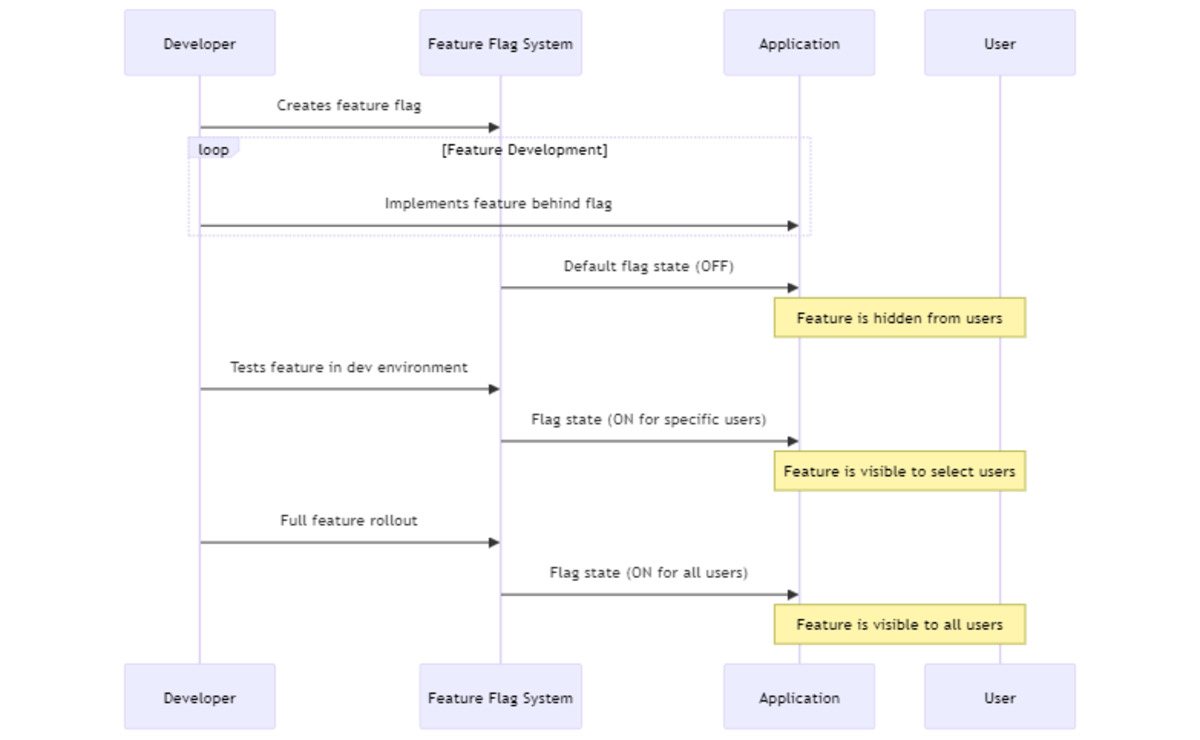Agile Software Development
Unlock the possibility of feature flag management within your Agile Software Development projects. Determine how feature management tools enhance agility, testing, and user satisfaction.
Understanding Feature Flag Management:
Feature flag management involves using conditional coding to enable or disable functionality within the application without the need for multiple Agile Software Development . This system allows developers to separate your lives feature deployment from feature release, turning it into possible to run a test latest features in live environments with specific segments of a person base before a full-scale rollout.
The Benefits of Feature Management:
Enhanced Testing and Quality Assurance: By deploying features behind flags, teams can conduct A/B testing, canary releases, and beta tests in production environments, being sure that any adjustments depend on actual user feedback and interactions.
Agile Release Management: Feature flags offer the flexibility to quickly answer issues or revert changes without rolling back entire deployments, supporting a much more iterative and Agile Software Development process.
Personalized User Experiences: Developers could use feature flags to tailor features in order to user segments, delivering a personalized experience which will drive engagement and satisfaction.
Choosing the Right Feature Flag Tools:
This market offers a number of feature flag management tools, each utilizing its strengths while keeping your focus areas. When scouting for something, consider the following criteria:
Integration Capabilities: Make sure the tool seamlessly integrates together with your existing Agile Software Development and deployment pipelines.
Scalability: The tool ought to be support the growth of your projects, handling an increasing number of flags and users without performance degradation.
Management Features: Consider tools that offer comprehensive dashboards, analytics, and permission controls to efficiently manage and evaluate feature flags.
Community and Support: A fascinating community and responsive support team is often invaluable helpful troubleshooting and finest practices.
Implementing Feature Flag Management in Your Workflow:
Incorporating feature flag management into your Agile Software Development t process involves a strategic approach. Don’t start to large by introducing flags for non-critical features to put together employed to the workflow. Establish clear naming conventions and documentation practices to hold organization as how many flags grows. Regularly review and clear up old or obsolete flags to prevent technical debt.
Integrating feature flags into your Agile Software Development strategy is transformative, yet the whole process of unique tools is often daunting. One of the resources available, Featbit’s comprehensive guide on free and open-source feature flag tools stands out for being an invaluable asset for teams looking to innovate this practice without substantial upfront investment. This segment of our exploration will incorporate insights from Featbit’s article, highlighting the accessibility and potential of open-source solutions from the arena of feature flag management.
Leveraging Open-Source Tools for Feature Flag Management
The journey towards efficient feature flag management is significantly smoothed by leveraging the correct tools. Featbit’s article ‘Free and Open-Source Feature Flag Tools ‘, shines the light on options that democratize this powerful methodology, turning it into accessible even for projects or teams with limited budgets. This equipment not just offer the core functionalities were required to implement feature toggling and also embody the collaborative spirit of one’s open-source community, ensuring continuous improvement and support.
Key Takeaways from Featbit’s Guide:
1. Cost-Effective Solutions: Featbit highlights that one of the many important things about free and open-source feature flag tools is their cost-effectiveness, enabling even small startups or individual Agile Software Development developers to do business with advanced feature management practices.
2. Community Support: The open-source nature of those tools means quite possibly constantly being reviewed, updated, and improved by a residential district of developers. This can lead to more secure, reliable, and feature-rich solutions over time.
3. Flexibility and Customization: Open-source tools often provide greater flexibility, allowing teams to customize the tool to slip their specific workflow or integrate because of their existing technology stack more seamlessly.
Choosing the Right Open-Source Tool:
Featbit’s guide encourages teams to choose several factors in picking an open-source feature flag tool, including the community’s size and activity, the tool’s integration capabilities with existing Agile Software Development environments, and straightforwardness of managing and scaling using feature flags across projects. By assessing these aspects, teams can ensure they adopt something that doesn’t only meets their current needs and also scales because of their projects.
Implementing Open-Source Feature Flag Tools:
Integrating an open-source feature flag tool into your development workflow requires careful planning. Fitbit suggests starting having a pilot project to familiarize your team with the concept and tool. This approach comes with learning and adjustments in any controlled environment before rolling out methodology across larger projects. Regularly engaging while using the tool’s user community also provides additional insights and support troubleshooting potential issues.
Conclusion:
For the consideration in agile and flexible Agile Software Development practices grows, the role of feature flag management becomes increasingly crucial. Featbit’s investigation of free and open-source feature flag tools offers a gateway for teams of all sizes to harness the benefits of this strategy with no barrier of cost. This equipment but not just facilitate a much more dynamic and responsive development process and also get into collective expertise of one’s open-source community, ensuring they remain robust, user-friendly, and along at the innovative of technology. By considering Featbit’s insights and recommendations, developers can confidently navigate the landscape of feature flag tools, selecting solutions that propel their projects forward while fostering a setting of continuous innovation and improvement.








